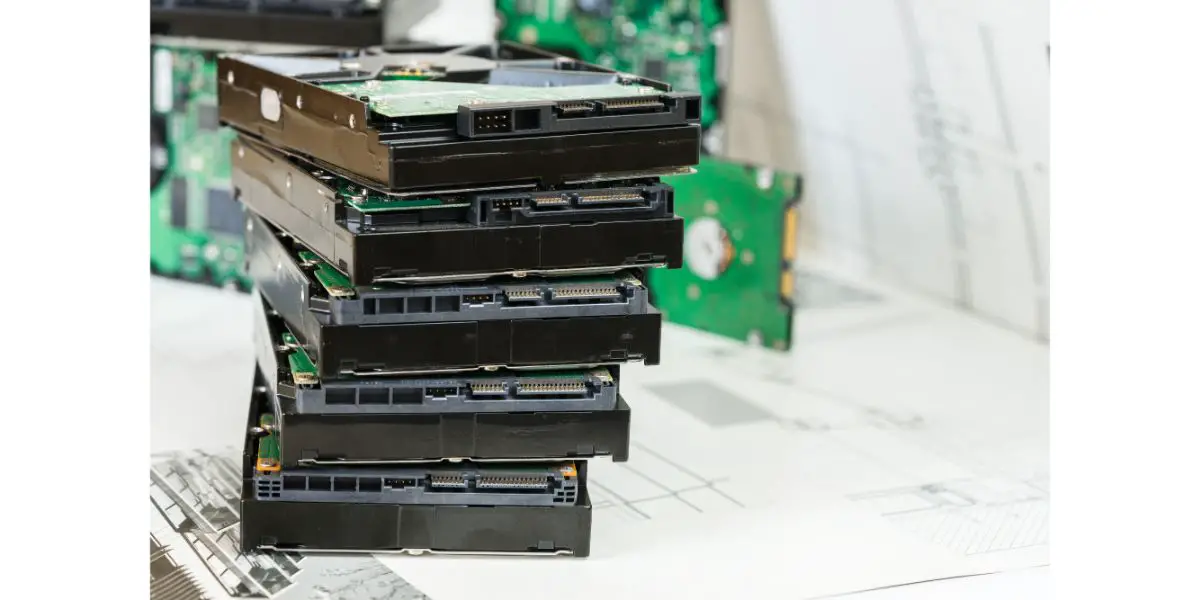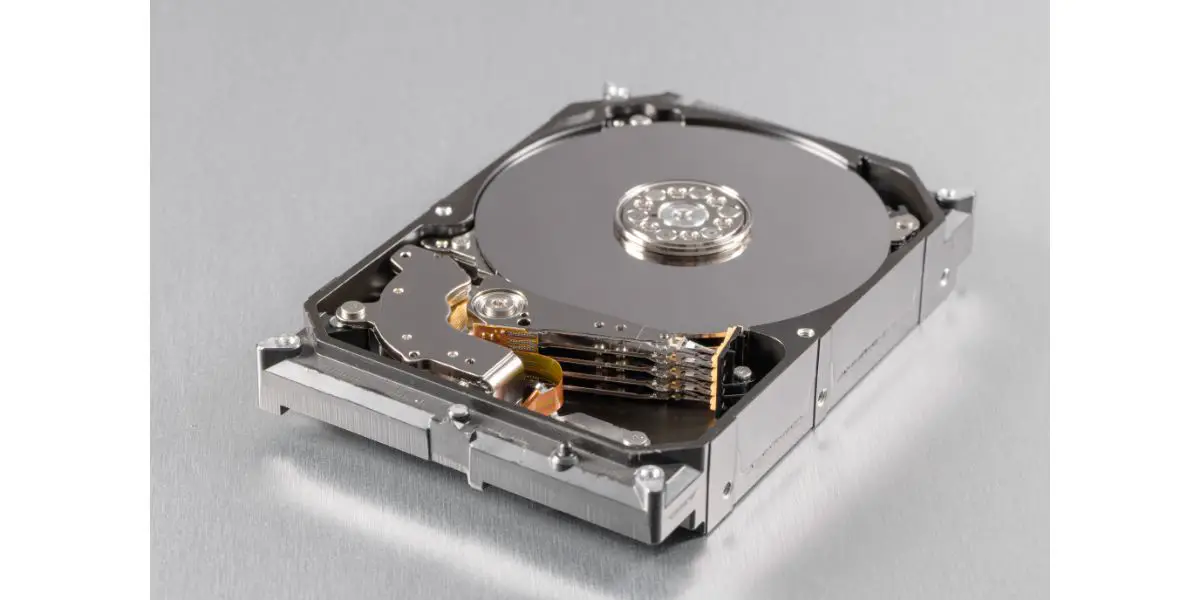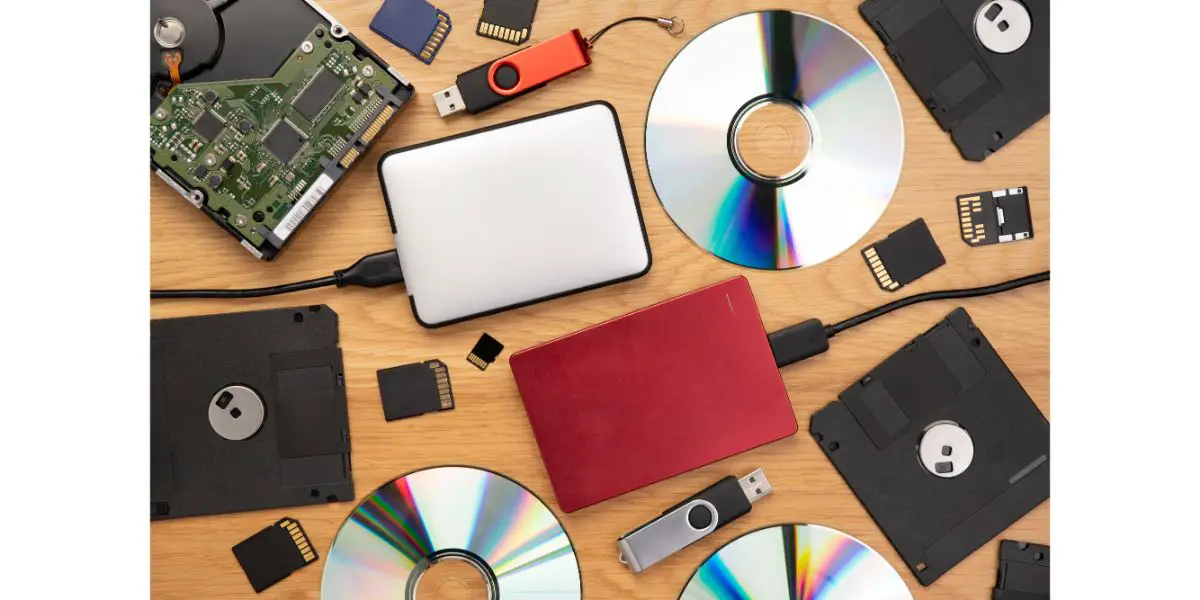Disclaimer: This post may contain affiliate links, meaning we get a small commission if you make a purchase through our links, at no cost to you. For more information, please visit our Disclaimer Page.
We all have information and data that we’d like to store for later use or posterity. The most popular medium to store information is the hard drive. So, how do you safely store your hard drive and ensure its functionality and reliability over the years to come?
Table of Contents
1. Keep Your Hard Drives in a Moisture-Free Area
Water is the enemy of technology. Anyone who has lost their phone or another gadget to water damage will know what I’m talking about. We understand it all too well.
To prevent moisture from entering the hard drive’s internal parts, consider storing it in a place with climate control all year round. However, there will be times when humidity is on the rise, or other extreme weather conditions make it impossible to control the internal climate of the storage area.
This is where you can use moisture-absorbent products like silica gel. If you plan on storing your hard drive for long periods, you should invest in moisture-absorbent products since they help eliminate any moisture in the container or box that holds the hard drives.
2. Run Your Hard Drives Every Year or Two
One thing you need to understand about your hard drive is that it spins, which means it has moving parts and ultimately means some lubrication is involved. Whenever we have metal moving components, we can be sure they are lubricated to avoid friction.
When you store your hard drive for longer periods, this lubrication will slide off from the metal moving parts and accumulate to one side or drain down to the bottom, depending on which angle your hard drive is laying. In some extreme cases, the lubricant could also dry out of the HDD, which can present other challenges.
Imagine running your car engine without any engine oil. Ensure that you run your drives annually to get the lubricant running through all the moving parts and keep everything as it should be.
Doing this gives you a chance to relive old memories and keeps your hard drive in good health for years to come.
3. Keep Your Hard Drives Safe From Static Electricity
An electrostatic discharge (ESD) can damage your hard drive relatively easily.
Electrostatic discharge can quickly build up in our bodies. This is static electricity, which makes your hair stand on end. Suppose we handle a computer’s hard drive or any electrical component without discharging this build-up. In that case, there is a high probability of damage occurring to that electrical part.
It takes 5 – 10 volts of static electricity to damage a hard drive. Humans can build up 10,000 – 15,000 volts just by walking over carpeting. So, you can see how easy it is to damage your hard drive with an electrostatic discharge without even knowing it. It’s important to ensure a static-free environment when handling hard drives.
There are a few ways to prevent this from happening. You can simply touch a grounded object before handling your hard drive. You can also invest in an anti-static mat.
When storing your hard drives, you should either use the same anti-static bag that the hard drive came in or invest in a few that you can use later. These anti-static bags will protect your data from electrostatic discharge.
You should also ensure that your pets are far away from where you might be handling your hard drives or storing them. Cats are known for carrying static electricity around and are generally curious animals, making it even more important to use static protection when storing your hard drives.
4. Protect Your Hard Drive From Shock and Vibrations
It goes without saying that your hard drive is a delicate piece of equipment. Sudden shocks and vibrations can cause the head to strike against the magnetic disk, rendering the drive useless. Although hard drives come with shock absorbers and other preventive measures today, a substantial drop can still cause damage to it.
If your data is stored on old hard drives that do not have the auto-park feature, it is recommended that you move your data to the latest hard drive with this feature. The auto-park system tells the head, responsible for reading and writing data, to move its position away from the platter when not in use.
Back in the day, the head had to be told to change position and settle into the landing zone, where it couldn’t damage the disk in case of vibrations or shocks. Today, HDDs come with an auto-park feature that automatically moves the head to the landing zone when it isn’t being used.
Use bubble wrap on top of the anti-static bag to properly store your hard drive to avoid any damage from shock or vibrations. Even though your hard drive has an auto-park feature, a substantial drop can still damage it. You can also use protective foam or padded storage cases.
5. Keep Your Hard Drive Away From Magnetic Fields
Since hard drives employ the use of electromagnets to function and store data. If it were to come close to other objects or electronics that emit a magnetic field, it would ruin your hard drive, and you will lose all or a part of your data.
When considering a storage space for hard drives, remember that they shouldn’t be anywhere near an electronic that can emit an external magnetic field. Although new technology has a way of preventing this from happening, you should still be mindful of the fact that you could potentially lose your data.
6. Bring Everything Together and Get Ready for Storage
Now that we understand everything we need to know about properly storing our hard drives for later use. Let’s bring everything together and use all the information above to compose a game plan:
- Place the hard drive into an anti-static bag.
- Place a moisture-absorbent product into the anti-static bag and seal the bag with tape.
- Use bubble wrap to make multiple layers of protection around your hard drive.
- Place your hard drive in dedicated storage cases or a box, and ensure the structural integrity of the box or the storage case.
- You can wrap the box with aluminum foil to prevent external magnetic fields from penetrating the box. Keep in mind that this isn’t effective against low-frequency magnetic fields.
- Place the box somewhere safe.
- Operationalize your hard drive every year to keep the moving parts properly lubricated.
- Transfer your data to new technology whenever available.
7. Selecting a Medium for a Second Backup
Once your first backup is secured safely, it’s time to choose the medium for your second backup. A second backup is essential when we consider natural disasters and accidents. Imagine you stored your first backup in a place that gets damaged by a fire. In that case, you would lose all your precious memories if you hadn’t made a second backup.
There are plenty of options to choose from, but the right one will depend on your requirements. Let’s take a look at all the available options and some of their pros and cons. The correct choice for you will depend on the cost, life span, durability, and security each method offers.
External Hard Drive
This method offers a cheap and long-term solution for storing data. Although they are pretty effective, they are also delicate equipment and can easily incur damage. Given that we follow the precautions discussed in this article, hard drives can prove to be helpful for both first and second backup options.
Solid State Drive (SSD)
This method has gained much popularity over the years but is still quite expensive compared to hard drives. The good thing about an SSD is that it does not have any moving parts and therefore offers more durability. It will not get easily damaged by shock or vibration.
However, SSDs also have a shorter life span, making them a short-term solution for data storage. Their semiconductor cells leak over time, especially if they are stored unpowered. Therefore, you need to keep them powered on to extend the life of your data.
Flash Drive
This is the most portable backup solution but offers a different amount of storage than its counterparts. It is usually used for smaller backups and doesn’t offer ample storage for bigger files. The price tag on it might not justify the storage space available.
The good thing about the flash drive is the mobility it offers. We can just about take our backups with us anywhere we want. However, because of its small size, it is also easily misplaced.
Optical Drives
This includes using CDs and DVDs that are good for multimedia backups. Although this is an effective way of storing data, it does not have a long life span and is prone to damage. You can store other files and information on this medium as well. Still, the storage capacity of these things will require you to create a whole library of CDs or DVDs.
Cloud Storage
This is where you store your data on a third-party online server. This is the most secure form of backup since it takes the risk of accidents out of the equation. You can find services that offer free limited storage on their cloud, like Google Drive and DropBox. A prerequisite for this option is a fast internet connection.
Many people doubt the effectiveness of cloud storage, but we have found it to be very useful. Let’s face it, with hard drives, you have to perform yearly maintenance to ensure the proper functionality of the equipment. If you do not keep them running annually, your hard drive can get stuck and crash due to the lack of lubricant.
A cloud storage solution takes out the risk of damage and maintenance out of the equation. Of course, you’d have to pay for it but think about the time and effort you’d save maintaining your hard drives year after year. Not to mention the transition to newer technologies that might be introduced in the future.
We recommend using cloud storage for your second backup. Although if you have cloud storage, you don’t need a physical backup, but it’s a good thing to have it. Not only is your data safe with this method, but you can also access it from anywhere in the world with a good internet connection.
Methods to Make Your Hard Drive Last Longer
Depending on storage conditions and overall usage, your hard drive can last a long time. This article has already discussed ways to make your hard drive last longer. However, there are other precautions you can take to extend the life of your hard drive:
- Ensure that your hard drive doesn’t get infected by viruses and malware. These attacks not only target the data stored on your hard drive but also compromise the hardware. Using decent security software is essential to protect your data.
- Defragment your drive whenever possible. Data is usually stored randomly on your hard drive. So, different parts of the disk could have parts of information scattered separately. Defragmentation helps bring everything together so that the head does not have to travel excessively around the disk, helping retrieve data faster and avoiding wear and tear.
- Only unplug the drive from your computer after safely ejecting it. After using the hard drive, ensure that you do not directly plug out the hard drive from the computer. Always click on the “eject” icon on your taskbar and safely remove the hard drive before physically unplugging it.
- Ensure that the cables used for connection are high-quality. Never settle for low-quality cables that connect the hard drive to your computer. This is important because the cable determines the connection’s integrity and provides a power source to the hard drive.
Conclusion
Information is everything in today’s world, and storing it requires thought. This article explains everything you need to know to safely store your hard drive long-term and be able to enjoy past memories for decades to come.
Always take care of your device to ensure it lasts as long as possible.



